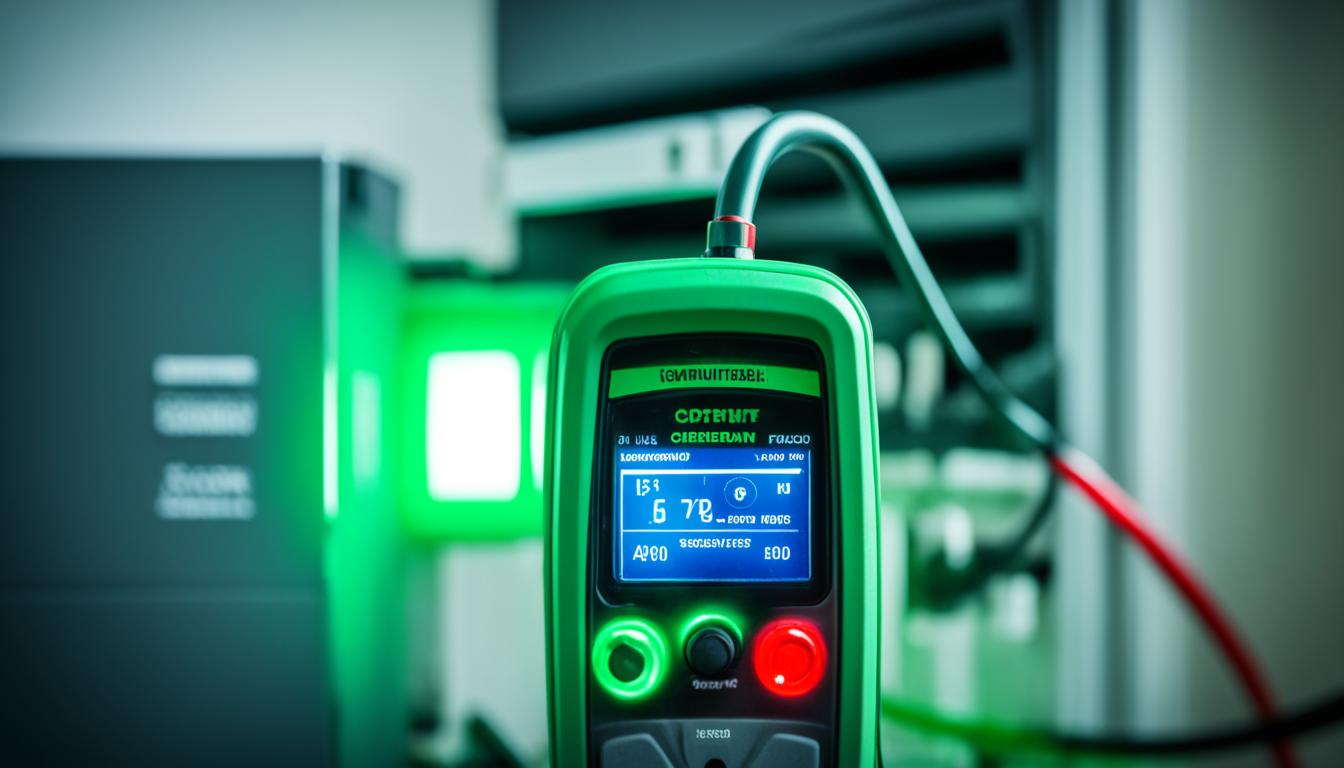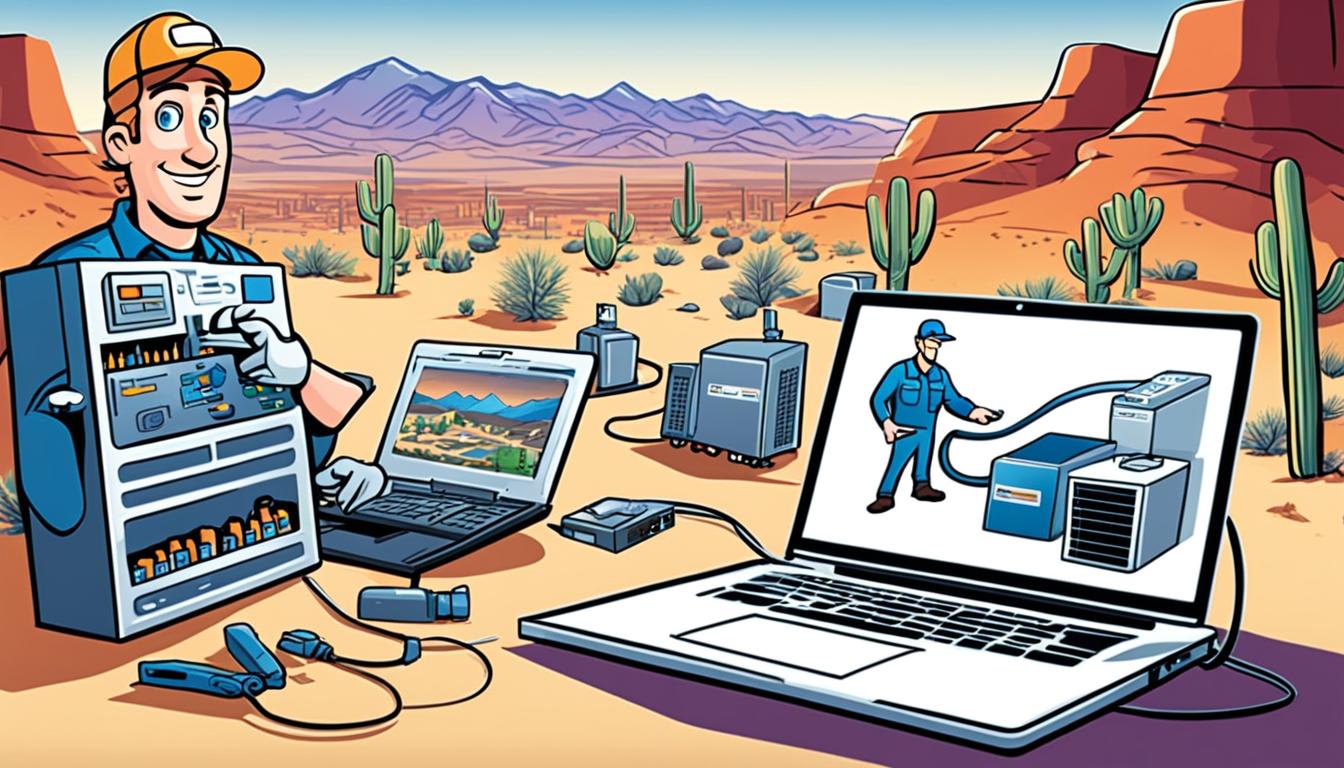Imagine walking into a scorching hot house on a sweltering summer day, eagerly hoping for the cool relief that your air conditioning system provides. But instead of a refreshing blast of cold air, you find yourself trapped in a suffocating sauna. Panic sets in as you realize something is wrong, and you frantically reach out to an AC repair contractor for help.
As an AC repair contractor, you understand the urgency and importance of promptly identifying and resolving issues with your clients’ cooling systems. But how can you ensure that your leak detection efforts are accurate and reliable? False positives can be a frustrating and time-consuming setback, leading to wasted resources and unnecessary alarm triggers.
In this article, we’ll explore proven strategies and best practices to help you avoid false positives and enhance the accuracy of your leak detection techniques. By understanding the limitations of your leak detectors, implementing proper maintenance procedures, and adopting effective strategies, you can protect your clients’ home comfort and build a reputation as a reliable and trusted AC repair professional.
Key Takeaways:
- False positives in leak detection can lead to inaccurate results and wasted time.
- Understanding the limitations of your leak detectors is crucial for accurate detection.
- Regular maintenance and calibration of leak detectors are essential for reliable results.
- Employing effective strategies for leak detection improves accuracy and reduces false alarms.
- Exploring different leak detection methods allows you to choose the most suitable approach for your needs.
The importance of understanding leak detector limitations
As an AC repair contractor, it is crucial for you to have a deep understanding of your leak detectors and their limitations. Different leak detectors may have specific sensitivities, which can lead to false positives if not properly addressed. By familiarizing yourself with your detector’s sensitivities, you can avoid unnecessary alarm triggers and improve leak detection accuracy.
Knowing the limitations of your detector is key to preventing false positives. Certain cleaners or soap bubbles used during the detection process can inadvertently trigger your detector, resulting in misleading results. Being aware of these potential false positives and their sources can help you avoid wasted time and resources.
One effective strategy is to test your detector’s sensitivity with calibrated leaks to determine its accuracy. By doing so, you can establish a baseline and understand how sensitive your detector is to different leak sizes and types. This knowledge will empower you to make more informed decisions during your leak detection process.
Another important consideration is to keep your detector properly maintained and calibrated. Regular maintenance ensures that your detector is functioning optimally and can accurately detect leaks. Some detectors require sensor replacement after a certain number of hours, so be sure to follow the manufacturer’s recommended maintenance schedule.
By knowing your detector’s limitations, practicing proper maintenance, and being aware of potential false positives, you can significantly improve your leak detection accuracy. This will not only save you time and resources but also enhance your reputation as a reliable and skilled AC repair contractor.
Best practices for maintaining leak detectors

Proper maintenance is crucial for ensuring the accuracy and reliability of leak detectors. By following these best practices, you can minimize false alarms and improve the overall efficiency of your leak detection efforts.
Regular functionality checks
To ensure your leak detector is operating at its optimal level, perform regular functionality checks. This involves testing the detector’s sensitivity and responsiveness in a controlled environment. By checking the functionality of your detector on a regular basis, you can identify any issues early on and take appropriate measures to address them.
Sensor replacement
Sensors play a vital role in leak detection accuracy. Over time, sensors can wear out or become less sensitive, leading to false alarms or missed leaks. It is important to replace sensors as required, based on the manufacturer’s recommendations. For example, most heated diode detectors require sensor replacement every 100 hours of use.
Avoid moisture exposure
Moisture can significantly impact the performance of leak detectors. Even small amounts of moisture can damage the detectors and affect their accuracy. It’s essential to keep your detectors away from moisture-prone areas and ensure they are stored in a dry, controlled environment. This simple step can go a long way in extending the lifespan of your detectors and maintaining their effectiveness.
Regular maintenance and calibration
Maintaining and calibrating your leak detectors on a regular basis is key to maximizing their accuracy. Calibration ensures that the detector is reading accurately and is aligned with the desired sensitivity level. It is recommended to schedule maintenance and calibration activities at fixed intervals, depending on the detector type and manufacturer’s guidelines. By adhering to a regular maintenance schedule, you can minimize false alarms and optimize the performance of your leak detectors.
By implementing these best practices for leak detector maintenance, you can enhance the accuracy of your leak detection efforts and minimize the occurrence of false alarms.
| Maintenance Step | Frequency |
|---|---|
| Functionality checks | Monthly |
| Sensor replacement | According to manufacturer’s recommendations (e.g., every 100 hours of use) |
| Avoid moisture exposure | Ongoing – store detectors in a dry environment |
| Maintenance and calibration | As per manufacturer’s guidelines (e.g., quarterly or semi-annually) |
Effective strategies for leak detection
When it comes to leak detection, AC repair contractors can greatly enhance their accuracy by implementing specific strategies and techniques. These strategies not only help in reducing false alerts but also enable more precise leak detection, ultimately saving time and resources.
Moving slowly and steadily
One effective strategy is to move slowly and steadily during the detection process. This allows contractors to carefully observe any potential leaks and pinpoint their exact location. It is important to remember that most refrigerants are heavier than air, so taking the time to thoroughly inspect each area can significantly improve detection accuracy.
Confirming leaks
A useful technique is to go back to the same point multiple times to confirm the presence of a leak. This helps eliminate false positives by ensuring that the detected leak is consistent and not a result of a temporary anomaly. By double-checking and confirming leaks, contractors can avoid unnecessary repairs and focus on addressing real issues.
Using bubbles for verification
Another effective strategy is to use bubbles to verify the presence of a leak. By applying soapy water or a specialized leak detection solution to potential leak points, contractors can observe the formation of bubbles, indicating a leak. This method adds an extra layer of confirmation to the detection process and reduces the chances of false positives.
By incorporating these strategies into their leak detection procedures, AC repair contractors can significantly reduce false alerts and improve the overall accuracy of their leak detection efforts. By doing so, contractors can focus their resources on addressing genuine leaks and providing their clients with more efficient and reliable service.
The Benefits of Effective Leak Detection Strategies
- Improved accuracy in leak detection
- Reduced false alerts and unnecessary repairs
- Enhanced customer satisfaction
- Cost savings through more efficient resource allocation
Exploring different leak detection methods
When it comes to leak detection in HVAC and refrigeration systems, there is no one-size-fits-all approach. Various methods are available to help AC repair contractors pinpoint leaks with precision and reduce false alarms. Understanding these different leak detection strategies is essential to improving the accuracy of your leak detection efforts and mitigating false positives.
Electronic leak detectors, such as negative corona discharge and heated diode detectors, have come a long way in minimizing false alarms. These detectors utilize advanced technologies to detect even the smallest leaks accurately. Ultrasonic detectors, on the other hand, rely on the detection of high-pitched sounds emitted by escaping refrigerant gas. By listening for these distinct sounds, contractors can identify leaks in hard-to-reach areas quickly.
Another effective method is the use of fluorescent dye kits. By injecting fluorescent dye into the system, contractors can easily spot leaks under UV light. This visual confirmation allows for precise leak detection and efficient repairs. Each detection method has its own advantages and limitations, so it is important to choose the method that best suits your specific needs and preferences.
By exploring and utilizing different leak detection methods, you can significantly improve the accuracy of your leak detection efforts while reducing false alerts. Whether you opt for electronic detectors, ultrasonic technology, or fluorescent dye kits, these strategies will enable you to identify and resolve leaks with confidence, ensuring efficient and effective repairs, and ultimately saving time and resources.





0 Comments